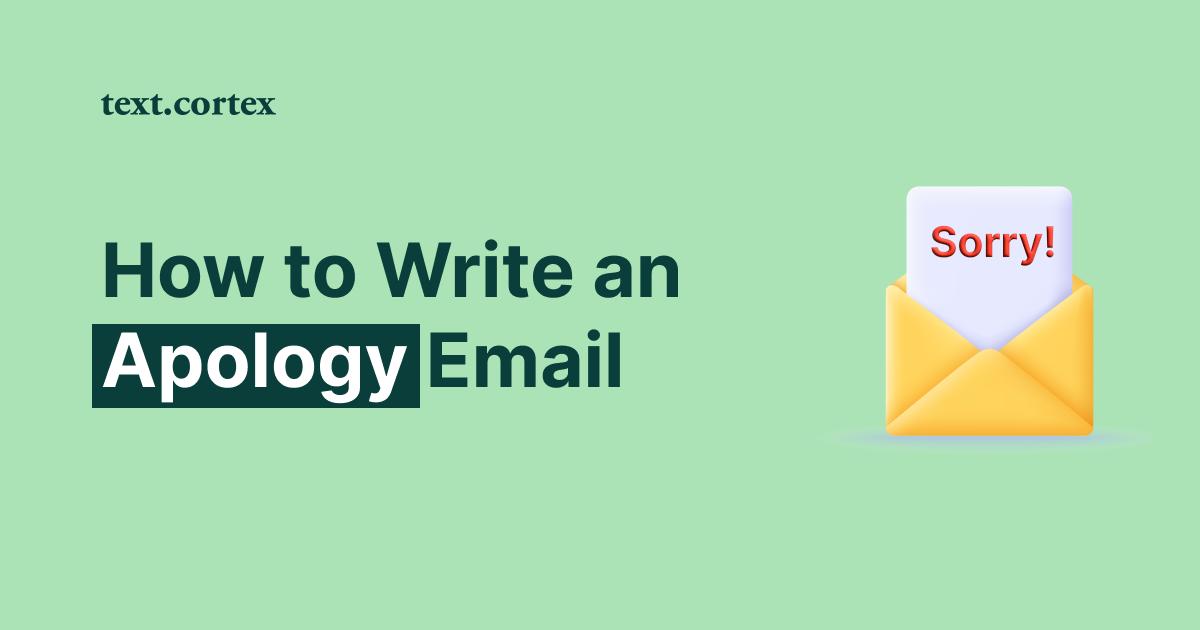Did you know that during a SuperOffice email marketing experiment, a segmented email campaign earned a 94% open rate and a 38% CTR?
You grasp the logic behind it and get the facts right, yet you struggle to figure out how that will help get prospects' attention and close more deals faster.
Let's compare these numbers to a non-segmented email campaign with a 42% open rate and 4.5% CTR — we can agree that a wise email strategy is a critical segment of any business plan, right?
And implementing the email outreach sequences can help you collect as many leads as possible and convert them into customers.
How to adopt such a strategy?
Today, we'll share with you 6 best email outreach sequences, along with samples to help you create them according to the prospect type to convert them effortlessly.
But, before we embark on that journey, let's find out a little more about outreach sequences and their critical segments so you can better understand the bigger picture.
Let's begin!
What are Outreach Sequences?
Outreach sequences are your best go-to email approach for turning cold traffic audiences into warm leads.
Why?
Because SDRs (Sales Development Representatives) and salespeople who are rock stars at reaching and converting their target consumers never stop tweaking their outreach sales sequences.
How do they do that?
We can divide outreach sequences into three stages:
- Outbound — A solid prioritization strategy that incorporates distinct approaches for high- and low-priority prospects.
- Post-Engagement - A referral sequence that includes a custom message with the 'FUP' (follow up) added to it to deal with common reactions.
- Meeting Set - a checklist of everything you need to do after they've confirmed a meeting.
SDRs establish their vital lead points first, then enhance and strengthen their emailing procedures until they develop an outreach sequence that converts those targets into potential clients.
Outreach email sequences are an excellent technique that, if set properly, assist your target audience as they progress through the buyer's journey.
They help you strive for lead generation, relationship development, or getting your prospects to perform a specific action (e.g., join your community, quick call, etc.).
Are you asking what to include when drafting your best outreach sequences?
Arriving in a minute.
The Essential Elements Of The Best Outreach Sequences
In this part, we will cover only the essential parts of the outreach sequence.
If you need more specific guidance on how to make mind-blowing marketing emails check our best marketing email hacks article.
1. Email Outreach Funnel
What is most challenging for B2B marketers is to find new leads that ultimately convert and engage the right prospects.
As the spinel core of any business, leads require a robust marketing funnel automation system.
A lead funnel, in this case, is a systematic approach to generating new leads for your business that helps you drive your target audience through different stages until they convert or make a purchase.
The most traditional lead funnel is a buyer's journey funnel that leads customers from the awareness stage to the decision stage.
To properly convert your prospects, you first need to educate them, provide value and finally give them a reason to decide to buy or collaborate with you.
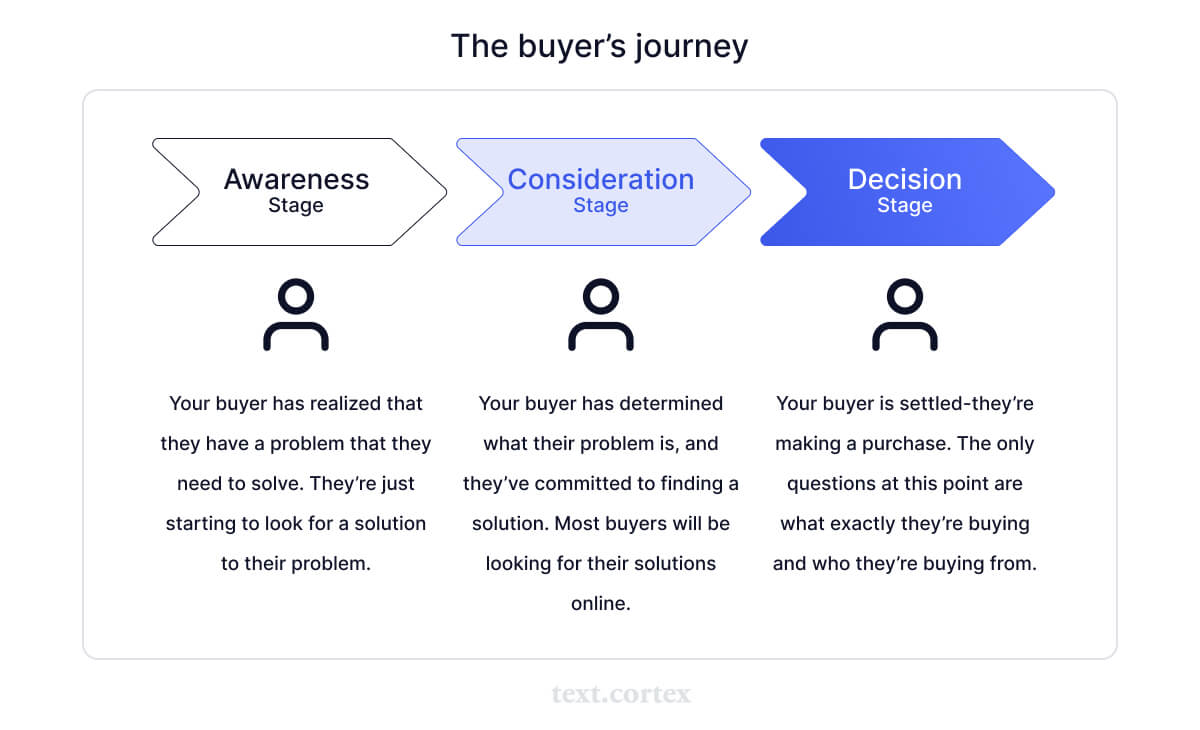
Keep in mind that your funnel might vary from industry to industry and based on value proposals.
But, for the most part, you'll focus on those who have a specific problem and lead them down your funnel until they convert.
You will find most of the new leads in cold traffic, but not everyone is ready to buy or work with you straight away.
Warm traffic is where you'll find additional new leads qualified and prepared to work with you.
2. A Catchy Subject Line
A study shows that creating catchy subject lines could increase open rates by 30%.
People receive tons of emails on a daily basis, and a good email base literally writes itself when you consider the reader’s point of view:
- How is this email sequence different?
- What do you offer to stand out?
To draw people’s attention and reach the part where you will actually be able to ‘seduce’ them to hear you out, you need to create a headline that dares to offer something extraordinary.
Here are a few ideas of which emotions to aim for more catchy and effective headlines:
- Target specific pain point
- Draw curiosity
- Invoke trust
- Create a sense of urgency
Here is an example of one that is highly clickable and yet draws a lot of attention:

A strong hook makes people feel intrigued to find out more — so carefully craft your headlines.
3. Personalization
Before we start talking about personalization, let me first tell you that 58% of revenue is generated thanks to segmented and personalized emails.
We can't deny the necessity of personalization in email marketing if we understand how it increases open rates through trust and acknowledgment.
Imagine if someone reaches you out with such an email approach that points out praises on your accomplished achievements and necessities towards your business needs.
When creating personalized messages, keep in mind that they must be specific. Otherwise, they will not be as effective as you would like them to be.
Let's look at some samples and ideas on how to do that.
1. Podcasts
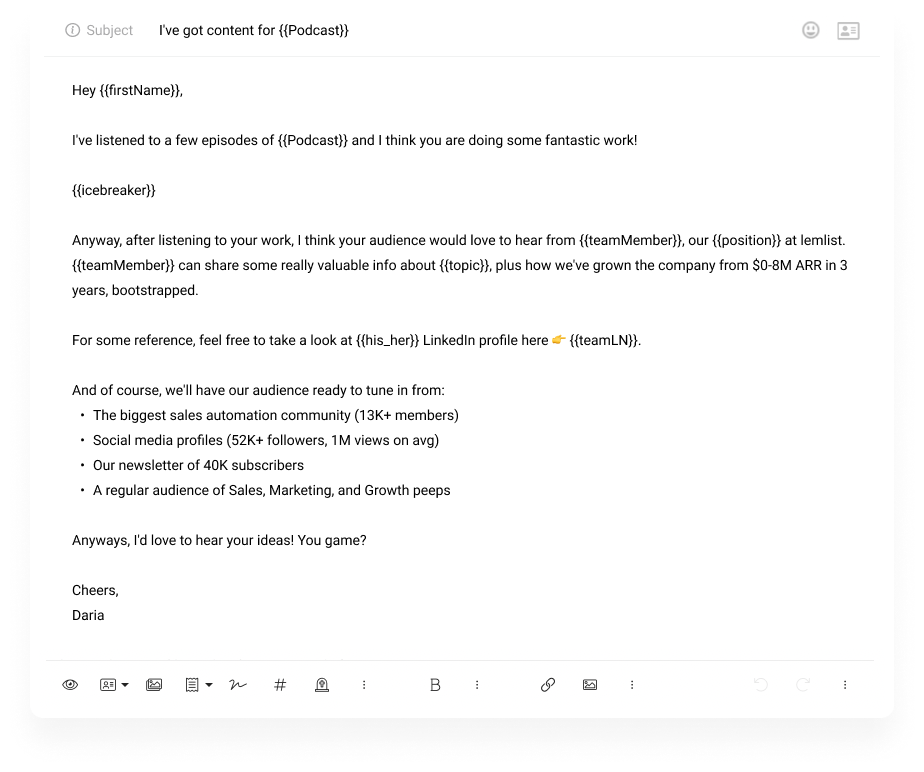
2. LinkedIn posts
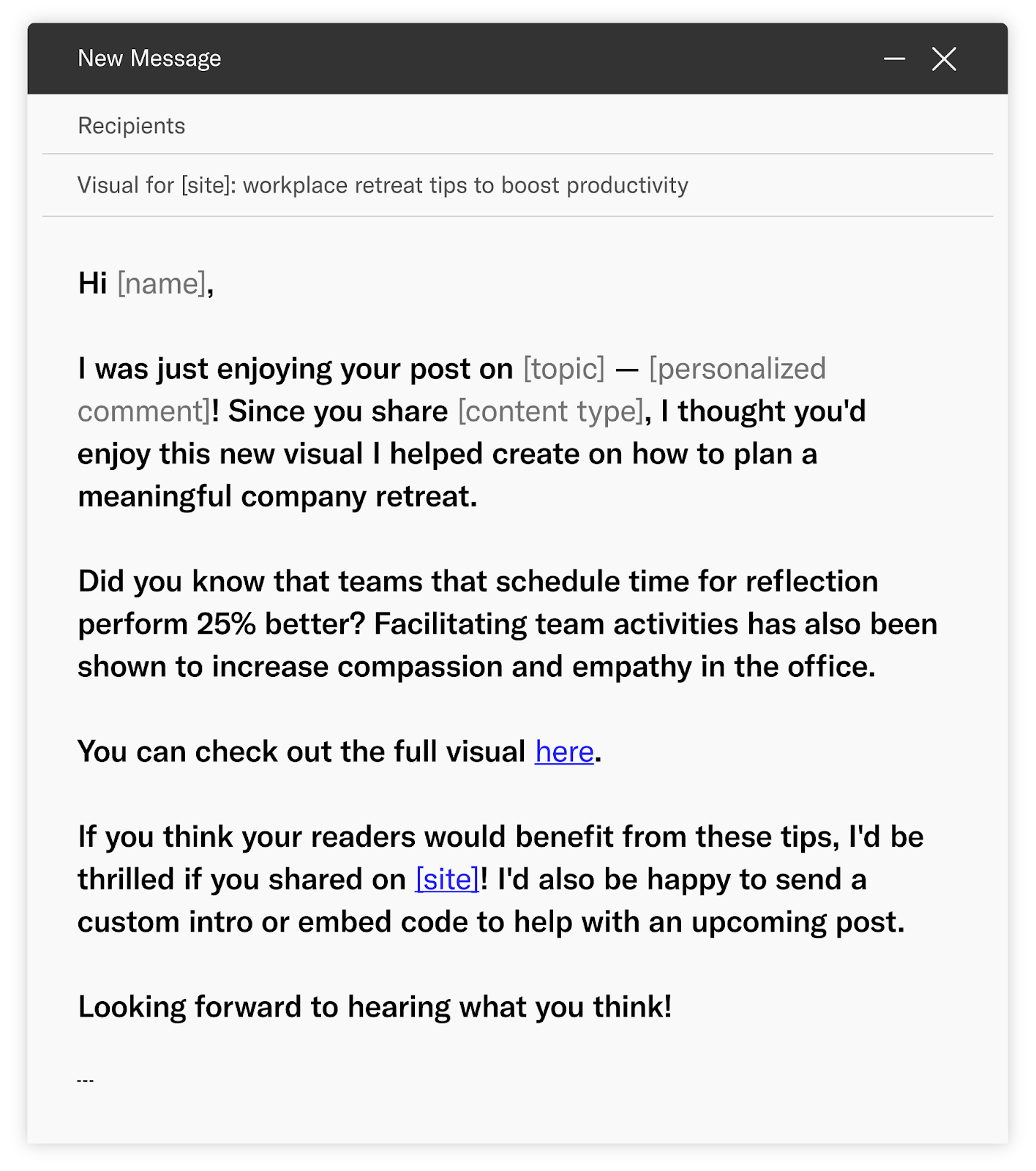
3. Website "about us" sections
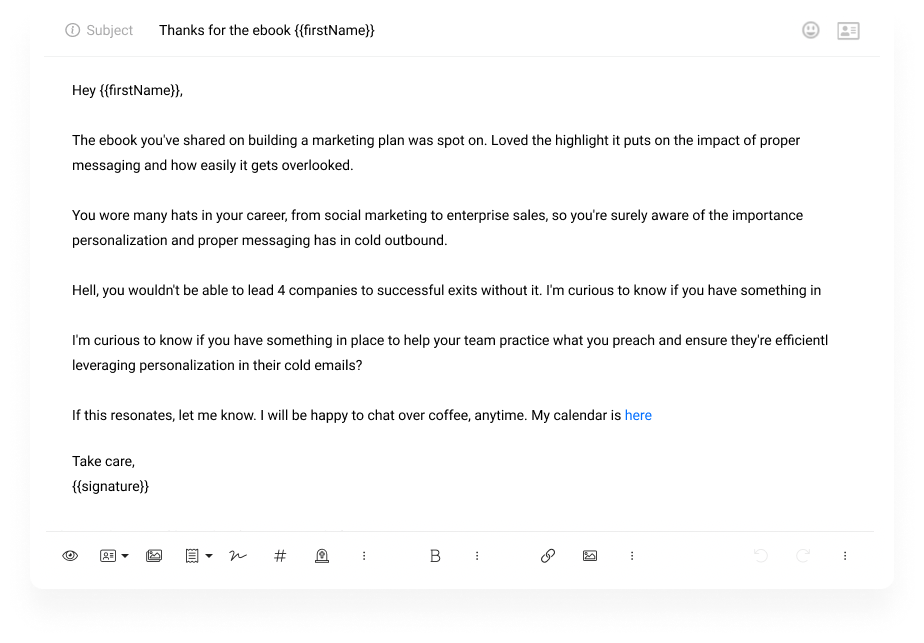
4. News articles
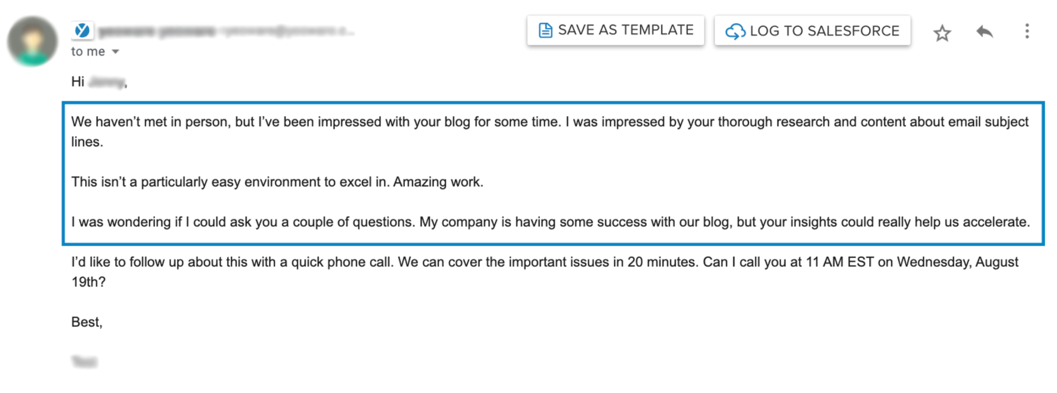
This strategy provenly leads to more engaged readers and moves them towards action because it leads to a good nurturing approach.
4. Relevant Value Proposal
In most cases, you shouldn't start selling in your first email outreach sequence, but your audience should know about you and what you are offering.
You need a specific bait for a particular fish, just like phishing.
Conduct research on the prospects you're contacting, and then determine what you can offer them that they currently don't have.
One of the most crucial points is that outreach emails are all about your prospects, not you.
Furthermore, the story in the sales email isn't about how super fantastic your solution is.
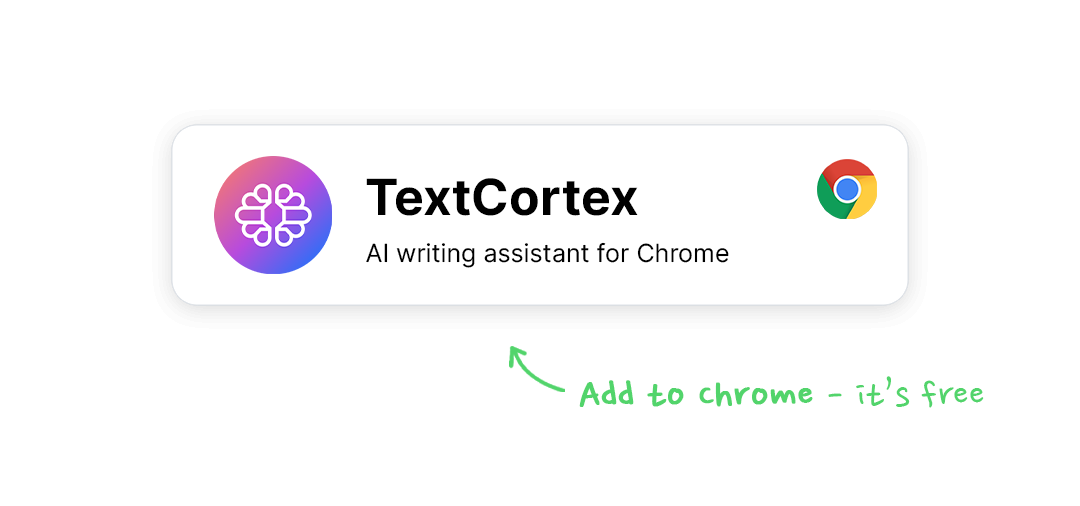
Instead, it should be about some specific issues they may be experiencing that your solution can resolve.
Here are some ideas:
1. Lead generation example

2. Link building example
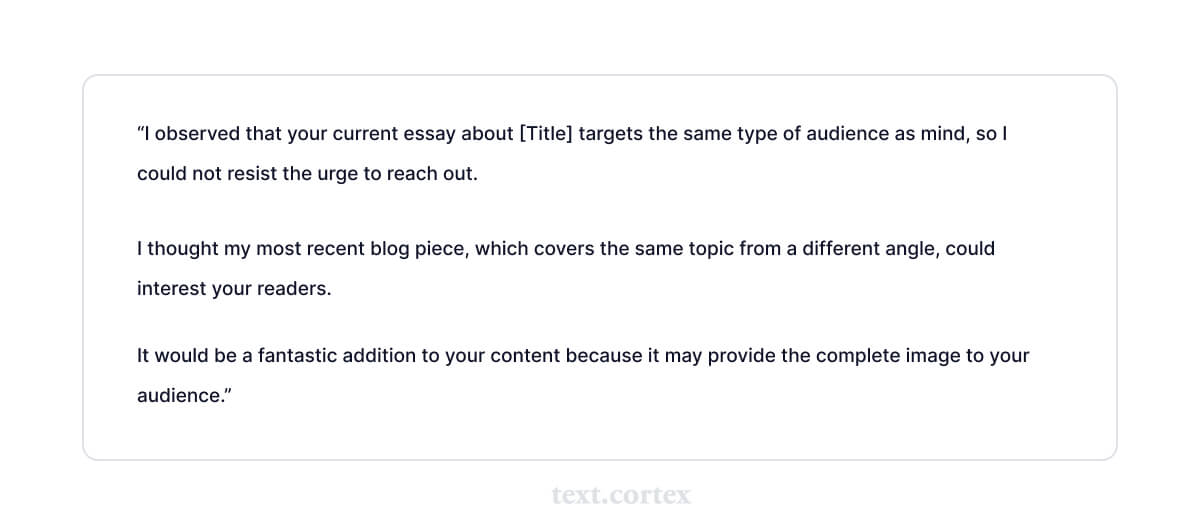
3. New partnership example
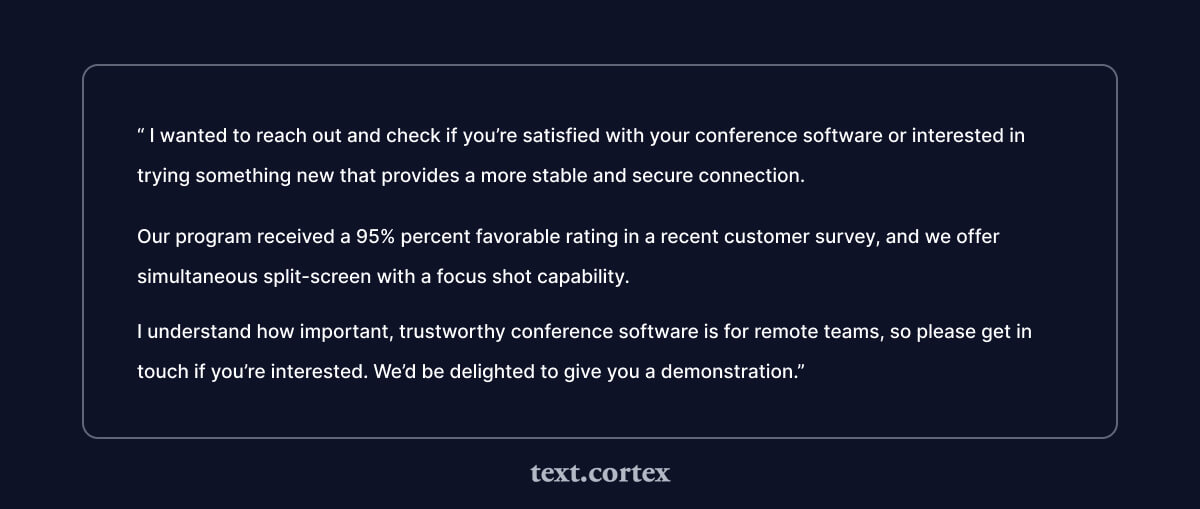
To keep the reader following through, all parts of your email must be consistent and have a natural flow.
Your value propositions should come soon after the introduction, so make sure to create a convincing reason for why you're reaching out.
5. Include Social Proof
Another thing that will ensure the success of your outreach sequence is to incorporate 1-2 sentences of a case study.
People enjoy hearing about facts that contribute to your company's success, and the more you can persuade them to believe your solutions, the more conversions you can expect.
Keep in mind that you don't have a lot of room in the emails, so use each paragraph strategically.
And the ideal strategy to achieve so is to give your prospects a rundown of how you've improved businesses similar to theirs.
Include a lot of data and numbers in your case studies to demonstrate what kind of results your prospects can expect.
For example:
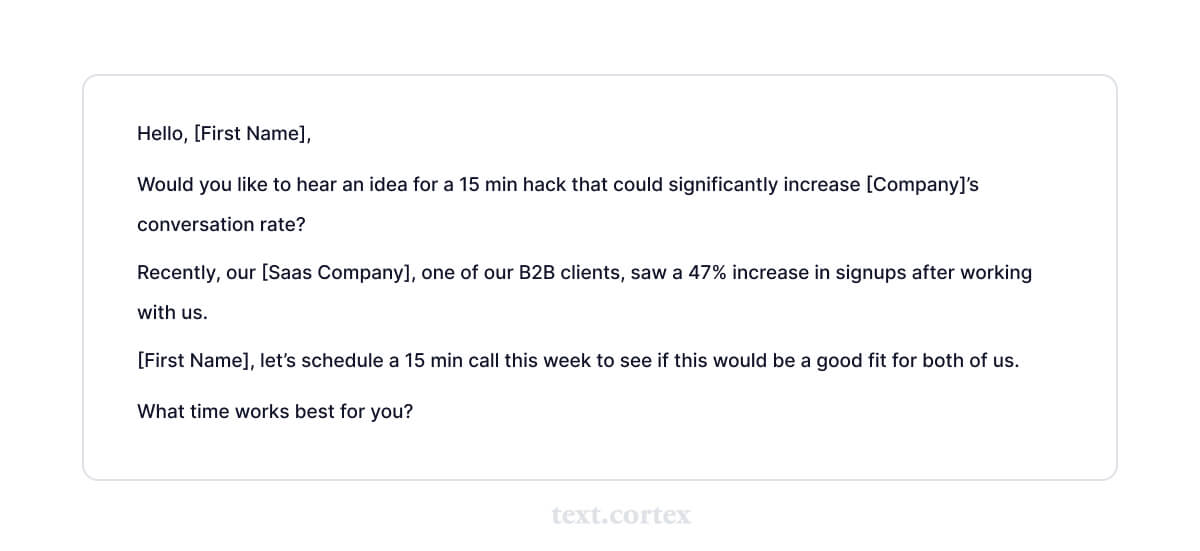
6. Don’t Forget Call-to-action (CTA)
Your outreach sequence needs to end with a solid and compelling CTA.
And the CTA is the final blow of your outreach sequence — the part where you need to balance your efforts and a desire to get the deal to a finishing line.
Yet, most people get this wrong.
Imagine a case in which your prospect is intrigued to give your service a try, but your email does not clarify how to contact you or the next step in the process.
He must exit his email, go to the web, look for your company, and 'walk' an extra mile for no reason – most consumers will give up and consider email without a CTA irrelevant.
Think about it – what is the point of reaching out unless you want your prospects to do something about it.
And, to do this properly, it's a good idea to give your prospects an option, so they don't postpone and put it off.
Let's take a look at good examples:
1. Ask for a phone call

2. Ask to send a video audit
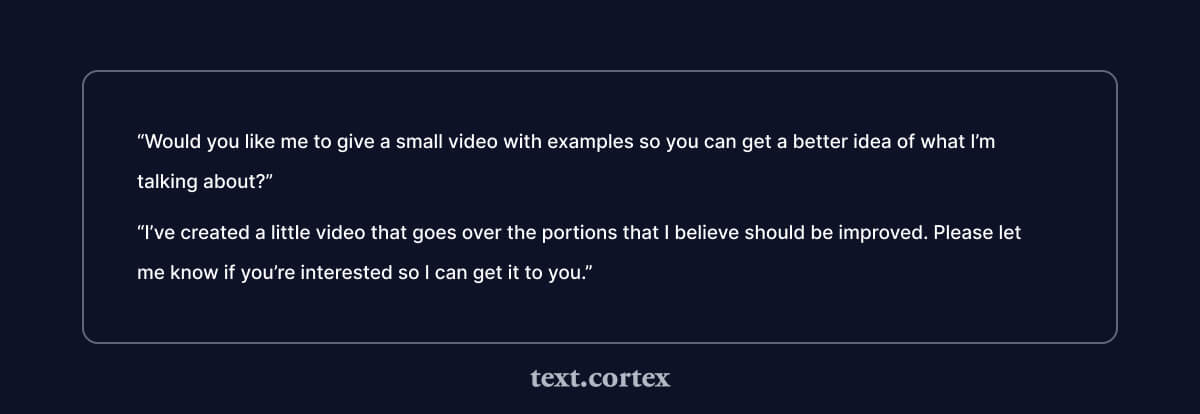
3. Or simply let your prospects make a decision
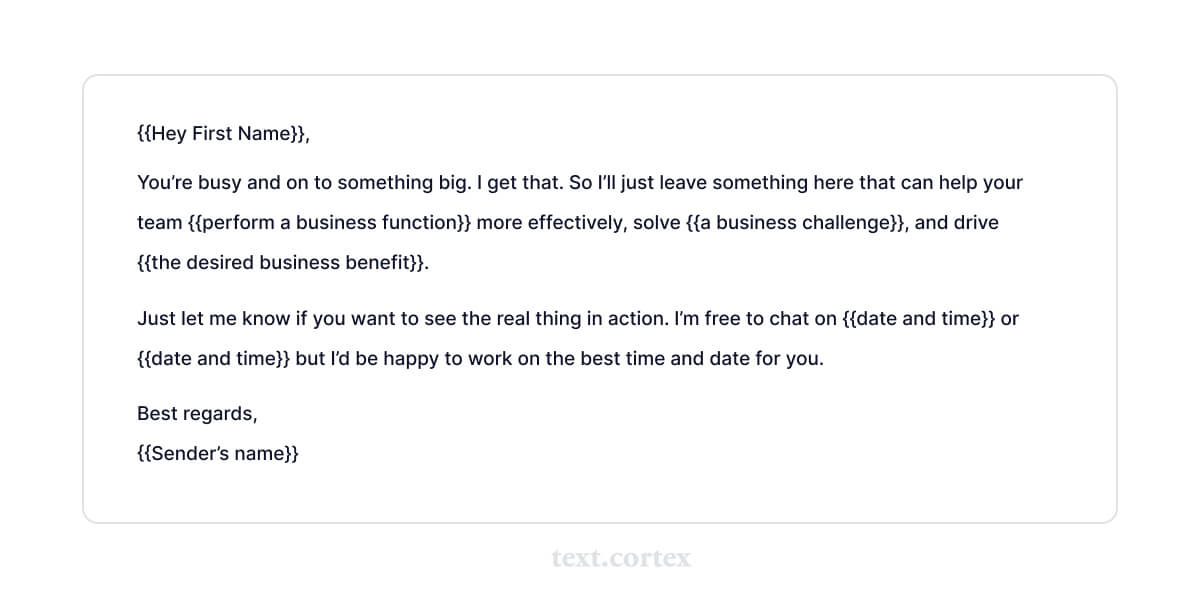
Some people make mistakes here by going overboard and trying to sell instead of getting prospects interested.
Use your CTA to hook the interest first, then let your solutions sell themselves.
7. Determine the duration of the sequence
Determining how often you should reach your prospects is equally crucial as the entire outreach sequence itself.
If you contact them too often, your emails will be treated as spam.
On the other hand, the outreach sequence becomes a waste if you do not contact them often enough to achieve familiarity.
Leading SDRs and salespeople have found that the response rate starts to drop after five emails in a sequence.
That means you need to balance between not spamming your prospects and not straying too far from your last attempt at fitting in.
For starters, a sequence of 3-5 emails should serve, but keep in mind that this may vary depending on the industry.
You can always calibrate and tweak your sequences until you achieve the outcomes you want for your business.
If you notice that you cannot set a meeting or your emails stay unopened, you should rethink your outreach strategy and double-check if you have the correct contact and content.
Additionally, there is no need to work on every prospect indefinitely – prioritize the accounts worth your time and effort.
Top 6 Best Email Outreach Sequences With Examples
Did you know that email marketing is mostly used for lead generation (85%), sales (84%), lead nurturing (78%), and customer retention (74%)?
1. Nurturing Email
When someone subscribes to your email lists, they start to get an automated series of emails known as a nurture sequence.
These prospects are usually interested in the content but not ready to buy or collaborate yet.
Nurturing sequence is responsible for establishing trust with subscribers and encouraging them as they progress down the funnel.
Example of an email in a nurturing sequence from Handy:
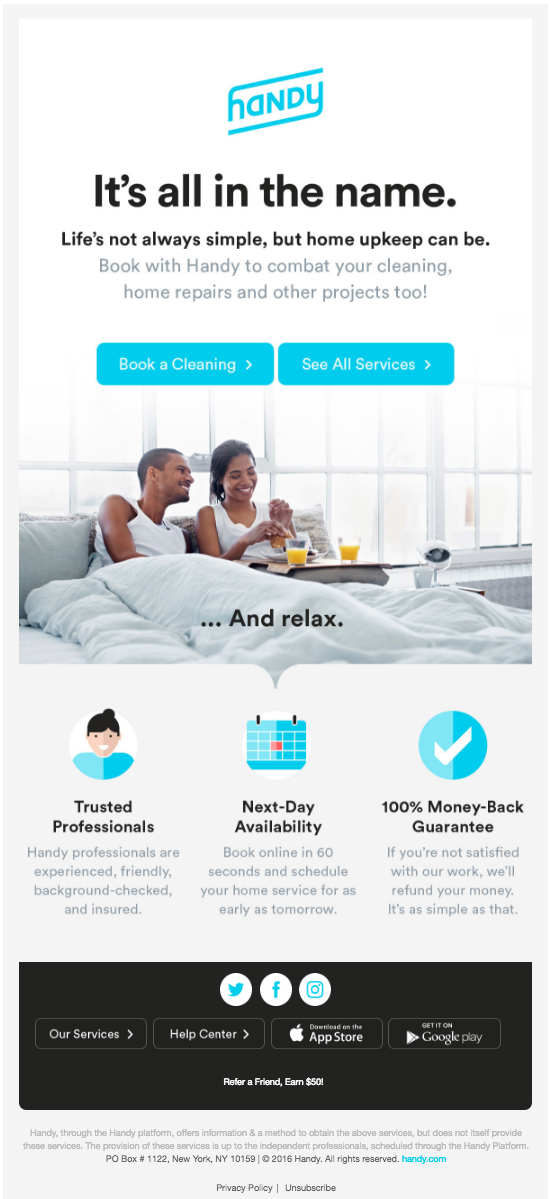
This example is an informative type of email that is unobtrusively letting you know about your options if you get interested.
What is even better about this example is that it offers more than just one option — subscribers can book a cleaning or just take a peek at the services they offer.
This way, you can increase your chances of winning more prospects to visit your website instead of just selling them a product/service that most of them will decline unless highly interested.
2. Engagement Email
The engagement email sequence is responsible for invoking interaction with prospects.
Its primary idea is to keep prospects engaged and build interest in your solutions.
Tools such as Mailtrack.io or Mixmax can help you in this sequence to track down the subscribers who act (open or click on an email) when you reach them out.
Example of an email in an engagement sequence from Amazon:
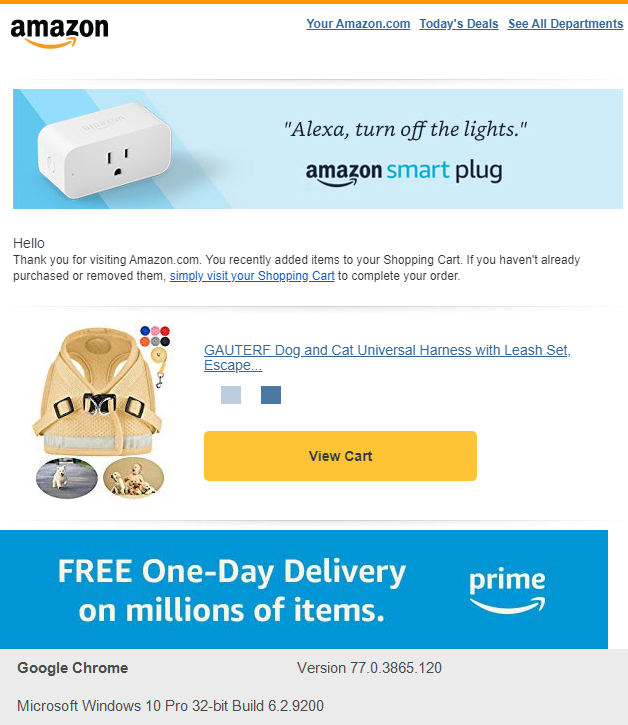
Here is an intelligent example of reaching out with a purpose.
We often miss finishing the purchase, and there is more than one reason:
- reconsidering the purchase
- a phone call that interrupts
- something better came up
- or simply not knowing how to find a page again
However, it is more handy than annoying to get a reminder that your product still awaits in the chart.
If the prospects are still interested, they will visit you back.
3. Conversion Email
When asking your prospect a question, utilize a conversion sequence (e.g., book a call, schedule a meeting, or send a demo).
The primary goal of the conversion sequence is to focus the recipient on a single CTA and persuade them to perform that action.
Example of an email in a conversion sequence from Lumosity:
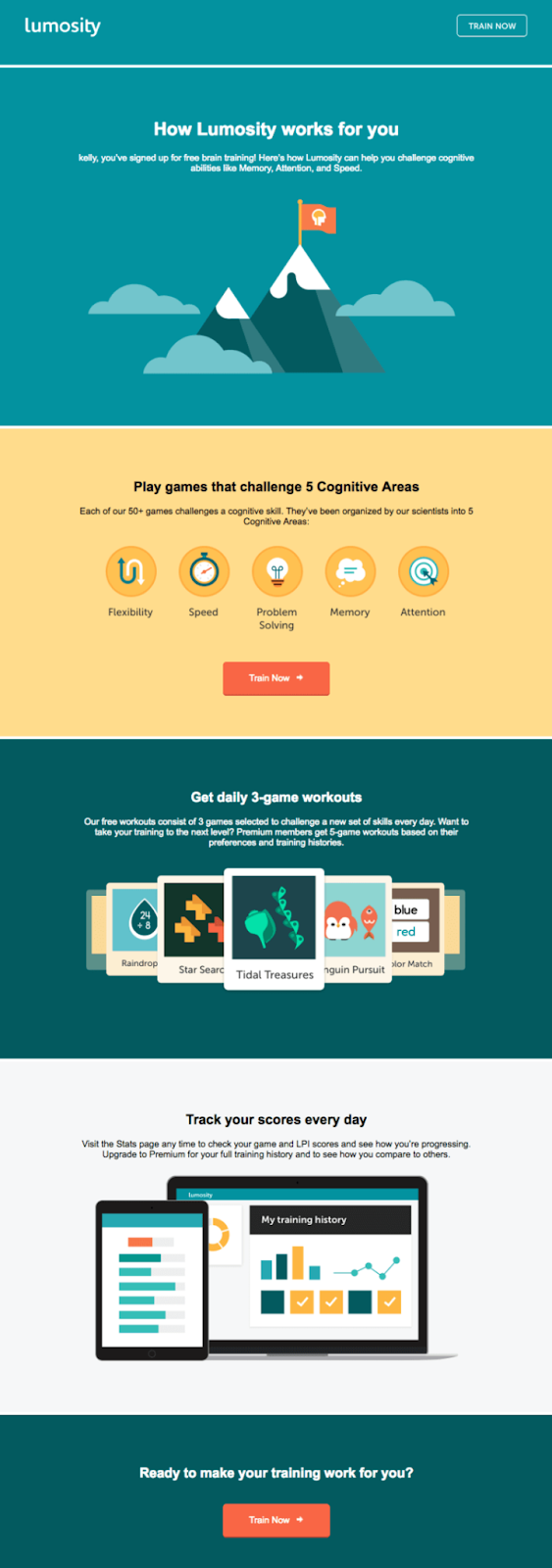
Lumosity found a compelling approach to showing multiple options with a single CTA.
If the first one is not interesting enough, the other two have a 50%-50% chance of attracting a prospect's curiosity..
4. Follow-Up Email
Sometimes when a prospect doesn't respond to your email, you need to give it a little 'push' with a few impressions before they take action.
After a few outreach attempts, a follow-up email sequence swings back and contacts your target.
That way, you can reduce the manual emails and lessen admin work.
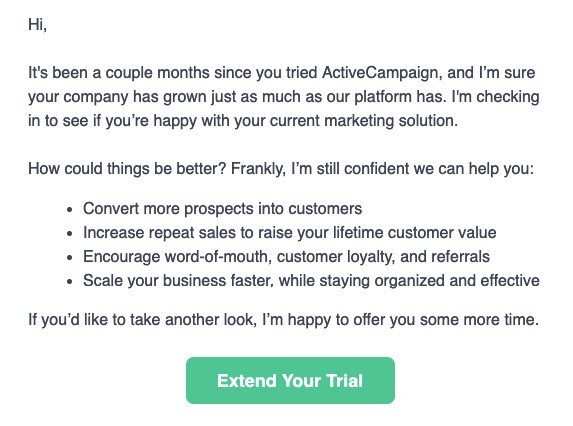
Follow-up emails are helping us to keep in touch with our subscribers.
This example shows us how to reach prospects and remind them about our services or products.
5. Reminders Email
Reminder emails are responsible for ensuring that the lead doesn't forget about the event or appointment and providing them with any necessary logistical details.
Whether your prospects book for a demo or sign up for a webinar, reminders can make a tremendous difference in your attendance rate.
Example of an email in a reminder sequence from Vend:
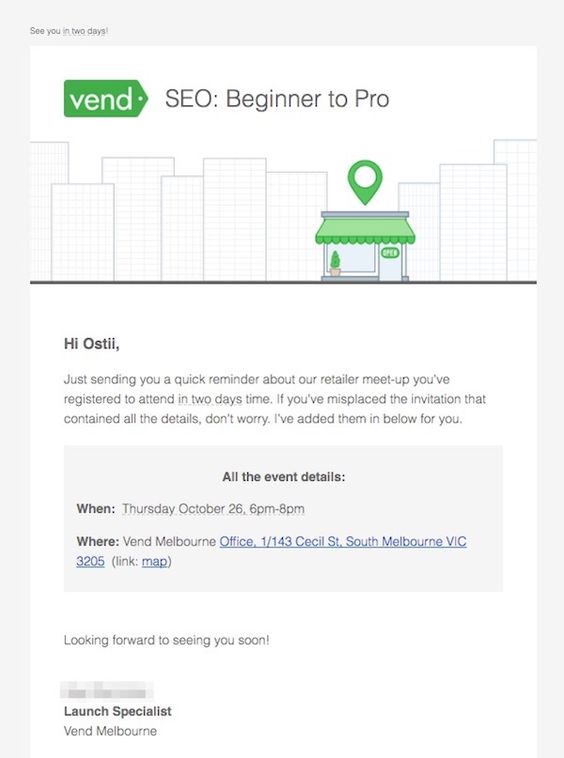
Rather than scratching your head about whether or not your prospect will show up, you can follow Vend's lead and send out reminder emails to reduce no-shows.
6. Re-Engagement Email
Prospects frequently lose interest or change their email addresses.
It's vital to keep your email contacts accurate and up to date if you want to get the most out of them.
To win over some of those leads, you can use a re-engagement sequence to check if they will perform any action when receiving the email.
Re-engagement sequence helps you maintain your emailing list — you can either remove the prospect from it if they do not respond or benefit again from them.
Example of an email in a re-engagement sequence from Paperworks:
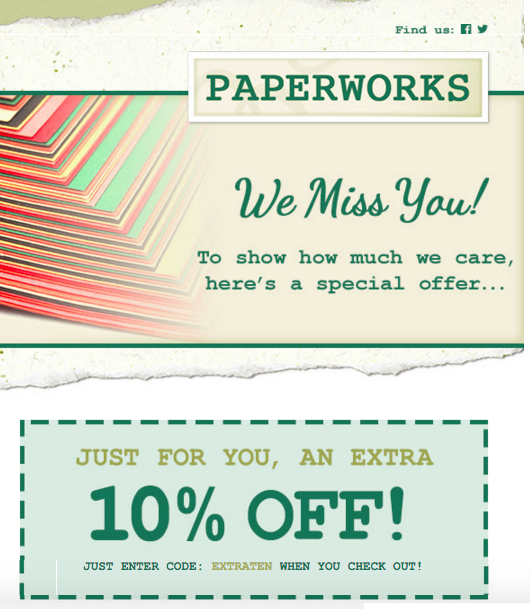
Paperwork has an excellent example of how to re-engage leads by providing them with a compelling incentive to return.
You can utilize this the next time you're cleaning up your email lists – it's a win-win situation.
If they accept the offer, you've got a good lead; if not, scratch them off your list.
To Sum Up
We hope that these examples can help you draft the best email outreach sequences on your own that will lead more prospects down the pipe that converts easily.
We know that creating new and compelling emails that target a specific audience is not an easy task.
Nevertheless, sending emails to subscribers at random, hoping that they'll act and connect with you simply because you showed up in their inbox, is a bad strategy.
For this purpose, we created TextCortex.
Instead of randomly crafting personalized outreach emails, you can automatically nail them down with each creation whenever your pen needs it.
How does it work?
TextCortex is a module-based AI writing assistant that generates any content type based on best practice use-cases, taking away 80% of your writing work.
This means that its AI writers, with the help of complex algorithms, use a 3 billion sentence knowledge base to generate content such as product descriptions, blog posts, ads, cold emails, etc.
In addition, TextCortex uses a machine learning process that allows its AI writers to understand the content before generating it.
In other words, whether you need to generate an entire article, rewrite a sentence, or generate cold emails from bullet points using our extension, you will always get natural-sounding output.
Let’s take a look:
Utilizing TextCortex extensions, you can:
- Rewrite your sentences to give them a more pleasant tone.
- Create long-form content from a single sentence.
- Extend your text to include more details.
- Make a summary of the original content.
- Use bullet points to create engaging emails.
- Autocomplete your sentences without finishing them.
Download our Chrome Extension and watch how TextCortex skyrockets your prospects' engagement and soars your conversions to the mind-blowing rates. 🔥

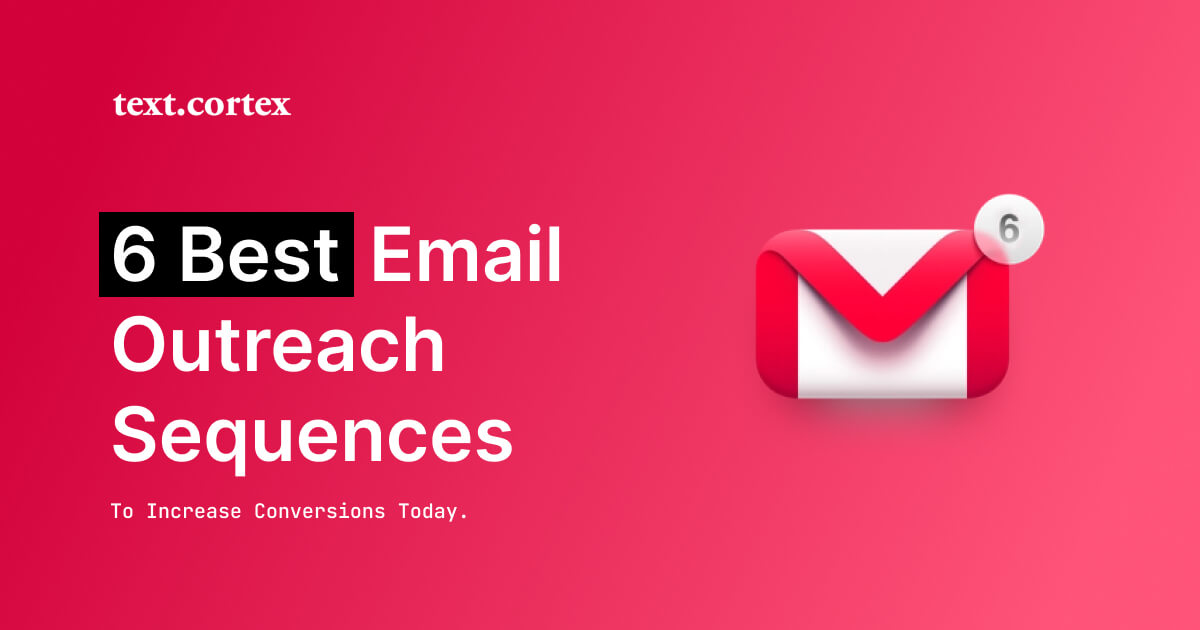
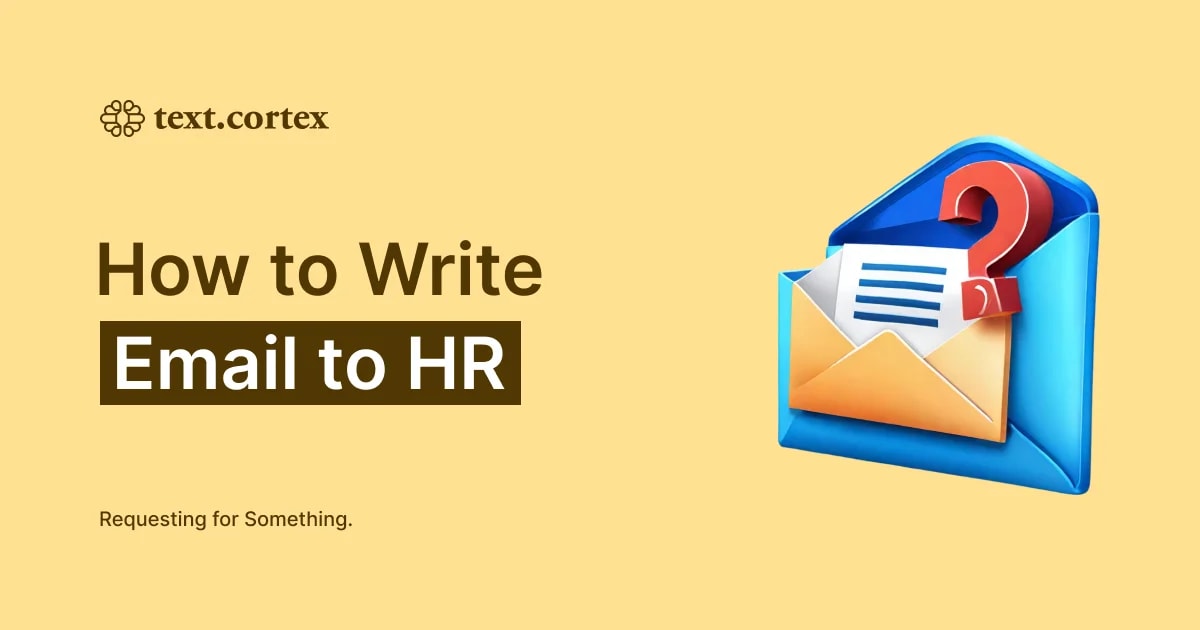
.png)
